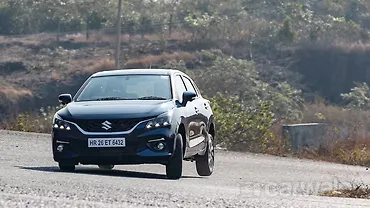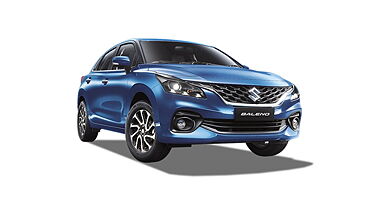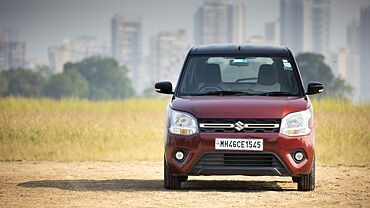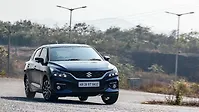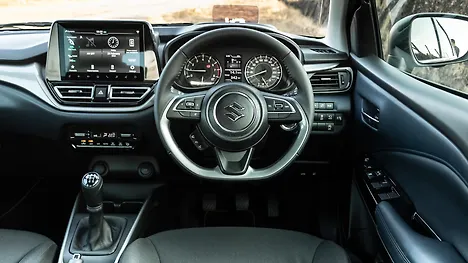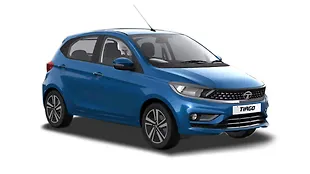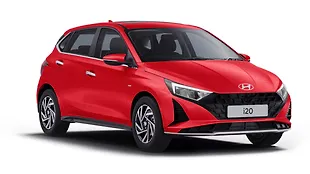
The competition in the premium hatchback segment has intensified with the launch of the 2022 Maruti Suzuki Baleno. On the other hand, we have the Hyundai i20, which is also a popular choice among new car buyers in the country. Read below to learn more about the key feature differences between these two models.

Exterior
The newly launched Maruti Suzuki Baleno is the first model to be based on Nexa’s Crafted Futurism design language. In terms of dimensions, the Baleno measures 3,990mm in length, 1,500mm in height, and gets a width of 1,745mm. The vehicle has a wheelbase of 2,520mm. For freshness, the updated model now offers LED projector headlamps with LED DRLs, redesigned grille, and LED fog lights. The side profile is now accentuated by new 16-inch precision cut alloy wheels, while the rear features redesigned LED tail lamps. The vehicle is available in six colour options – Nexa Blue, Opulent Red, Grandeur Grey, Luxe Beige, Spendid Silver, and Arctic White.
Hyundai introduced the third-generation i20 in India in 2020. The premium hatchback from Hyundai is based on the global design language, ‘Sensuous Sportiness’ and it gets edgy and sharp character lines as compared to its predecessor. The fascia is highlighted by a parametric jewel pattern grille, LED projector headlamps, and LED DRLs. The side profile is highlighted by sporty 16-inch diamond-cut alloy wheels, while the rear features the stylish and sporty Z-shaped LED tail lights with connecting chrome garnish.

Interior
As claimed by Maruti Suzuki, the new Baleno features sleek, stylish, premium, and sculpted interior. The hatchback now offers dual-tone upholstery in addition to first-in-segment features such as Head Up Display (HUD) and 360-degree camera. Moreover, for added convenience the vehicle also offers a next-gen Suzuki Connect telematics system with over 40 connectivity features, a nine-inch SmartPlay Pro+ infotainment system with HD display, auto climate control, auto-dimming IRVM, and leather-wrapped flat-bottom steering wheel. Additional feature highlights also include cruise control, rear AC vents, and rear fast-charging USB.
Like the exterior, the Hyundai i20 also gets a premium and sophisticated layout. Hyundai claims that the large Day Light Opening (DLO) area offers a roomy and spacious cabin. The dashboard features a 10.4-inch HD infotainment system with a navigation system. Additionally, it also gets a digital cluster with TFT Multi-Information Display (MID). Furthermore, the vehicle gets an artificial leather-wrapped steering wheel with satin chrome finish, leather seat upholstery, blue ambient light, and oxy boost air purifier with air quality indicator.

Engine
The 2022 Maruti Suzuki Baleno is powered by a 1.2-litre dual VVT petrol engine that generates 89bhp at 6,000rpm and 113Nm of torque at 4,400rpm. The manual transmission returns 22.35kmpl, while the AGS version returns 22.94kmpl, as certified by test agency under rule 115 of CMVR 1989.
On the other hand, the Hyundai i20 has an added advantage with the option of a diesel engine. The 1.2-litre Kappa petrol engine produces 82bhp at 6,000rpm and 115Nm of torque at 4,200rpm. This engine is available in a five-speed manual and IVT (Intelligent Variable Transmission) option. The manual variant generates 82bhp at 6,000rpm, while the IVT option produces 86bhp at 6,000rpm. The vehicle also offers the 1.0-litre Kappa Turbo GDi petrol engine option that produces 118bhp at 6,000 rpm and 172Nm of torque between 1,500rpm to 4,000 rpm. This engine can be had in either a seven-speed DCT (Dual Clutch Transmission) or an iMT (Intelligent Manual Transmission) option. The diesel version gets a 1.5-litre U2 CRDi engine that generates 99bhp at 4,000rpm and 240Nm of torque between 1,500 to 2,750rpm. This engine comes mated to a six-speed manual transmission.

Conclusion
The Hyundai i20 offers a wide range of engine options in multiple variants, therefore clearly spoiling the buyers with a wide range of choices. On the other hand, the 2022 Maruti Suzuki Baleno scores additional brownie points with first-in-segment features and the latest optional safety equipment in the form of six airbags, a 360-degree camera, and more. Therefore depending on individual preferences, buyers can opt from either of them.


![Hyundai i20 [2020-2023] Image Hyundai i20 [2020-2023] Image](https://imgd.aeplcdn.com/272x153/n/cw/ec/40530/i20-exterior-right-front-three-quarter-5.jpeg?q=80)
